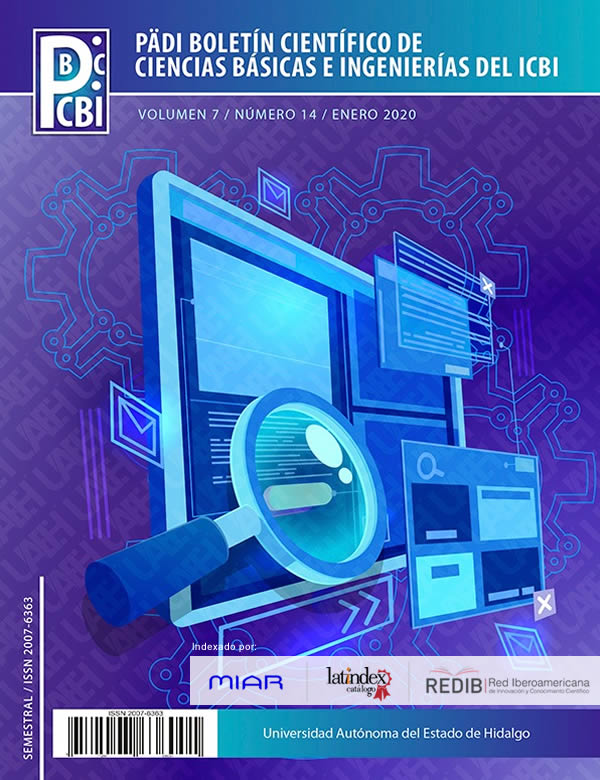Edible mushrooms: A healthy alternative in meat products.
Abstract
Currently, the consumption of meat products has been related to the risk of chronic diseases, such as cardiovascular diseases, cancer, hypertension, diabetes and obesity. This is due to the high fat content, absence of fiber and the addition of chemical additives present in the commercial meat products. It is also related to a high intake of this type of food and the modern lifestyle. The growing concern for health increases the consumer demand for the availability of healthy foods, leading to generate new alternatives from natural sources. Under this context, edible mushrooms are considered an excellent alternative as an ingredient in the formulations of meat products, because they are an important source of nutritional components, mainly because of their high content of carbohydrates (fiber), protein (amino acids), as well as its low caloric and fat content. The addition of edible mushrooms in meat products can improve nutritional quality of meat products.
Downloads
References
Balder, H. F., Vogel, J., Jansen, M. C. J. F., Weijenberg, M. P., van den Brandt, P. A., Westenbrink, S., van der Meer, R., et al. (2006). Heme and chlorophyll intake and risk of colorectal cancer in the Netherlands cohort study. Cancer epidemiology, biomarkers & prevention: a publication of the American Association for Cancer Research, cosponsored by the American Society of Preventive Oncology. Cancer Epidemiology Biomarkers & Prevention, 15(4), 717–25.
Barros L., Baptista P., Estevinho L.M., Ferreira, I.C.F.R. (2007) Bioactive properties of the medicinal mushroom Leucopaxillus giganteus mycelium obtained in the presence of different nitrogen sources. Food Chemistry, 105: 179-186.
Biesalski, H. 2005. ‘MEAT Meat as a Component of a Healthy Diet – Are There Any Risks or Benefits If Meat Is Avoided in the Diet ?’ 70: 509–24. https://doi.org/10.1016/j.meatsci.2004.07.017.
Cano-Estrada, Araceli, and Leticia Romero-Bautista. 2016. ‘Valor Económico, Nutricional y Medicinal de Hongos Comestibles Silvestres’. Revista Chilena de Nutrición 43 (1): 75–80. https://doi.org/10.4067/s0717-75182016000100011.
Carrasco-González, Jorge Alberto, Sergio O. Serna-Saldívar, and Janet A. Gutiérrez-Uribe. 2017. ‘Nutritional Composition and Nutraceutical Properties of the Pleurotus Fruiting Bodies: Potencial Use as Food Ingredient’. Journal of Food Composition and Analysis. Academic Press Inc. https://doi.org/10.1016/j.jfca.2017.01.016.
Cheung, Peter C.K. 2013. ‘Mini-Review on Edible Mushrooms as Source of Dietary Fiber: Preparation and Health Benefits’. Food Science and Human Wellness. Elsevier B.V. https://doi.org/10.1016/j.fshw.2013.08.001.
Corrêa, Rúbia Carvalho Gomes, Tatiane Brugnari, Adelar Bracht, Rosane Marina Peralta, and Isabel C.F.R. Ferreira. 2016. ‘Biotechnological, Nutritional and Therapeutic Uses of Pleurotus Spp. (Oyster Mushroom) Related with Its Chemical Composition: A Review on the Past Decade Findings’. Trends in Food Science and Technology. Elsevier Ltd. https://doi.org/10.1016/j.tifs.2016.01.012.
Decker, Eric A., and Yeonhwa Park. 2010. ‘Healthier Meat Products as Functional Foods’. Meat Science. https://doi.org/10.1016/j.meatsci.2010.04.021.
Grasso, S., N. P. Brunton, J. G. Lyng, F. Lalor, and F. J. Monahan. 2014. ‘Healthy Processed Meat Products - Regulatory, Reformulation and Consumer Challenges’. Trends in Food Science and Technology. Elsevier Ltd. https://doi.org/10.1016/j.tifs.2014.06.006.
Guinard, Jean Xavier, Amy Myrdal Miller, Kelly Mills, Thomas Wong, Soh Min Lee, Chirat Sirimuangmoon, Sarah E. Schaefer, and Greg Drescher. 2016. ‘Consumer Acceptance of Dishes in Which Beef Has Been Partially Substituted with Mushrooms and Sodium Has Been Reduced’. Appetite 105: 449–59. https://doi.org/10.1016/j.appet.2016.06.018.
Kumar, Pavan, M. K. Chatli, Nitin Mehta, Parminder Singh, O. P. Malav, and Akhilesh K. Verma. 2017. ‘Meat Analogues: Health Promising Sustainable Meat Substitutes’. Critical Reviews in Food Science and Nutrition 57 (5): 923–32. https://doi.org/10.1080/10408398.2014.939739.
Ledesma, Estefanía, Amanda Laca, Manuel Rendueles, and Mario Díaz. 2016. ‘Texture, Colour and Optical Characteristics of a Meat Product Depending on Smoking Time and Casing Type’. LWT - Food Science and Technology 65: 172. https://doi.org/10.1016/j.lwt.2015.07.077.
Moon, B., and Y. M. Lo. 2014. ‘Conventional and Novel Applications of Edible Mushrooms in Today’s Food Industry’. Journal of Food Processing and Preservation. https://doi.org/10.1111/jfpp.12185.
Pil-Nam, Seong, Kyoung Mi Park, Geun Ho Kang, Soo Hyun Cho, Beom Young Park, and Hoa Van-Ba. 2015. ‘The Impact of Addition of Shiitake on Quality Characteristics of Frankfurter during Refrigerated Storage’. LWT - Food Science and Technology 62 (1): 62–68. https://doi.org/10.1016/j.lwt.2015.01.032.
Reis, Filipa S., Lillian Barros, Anabela Martins, and Isabel C.F.R. Ferreira. 2012. ‘Chemical Composition and Nutritional Value of the Most Widely Appreciated Cultivated Mushrooms: An Inter-Species Comparative Study’. Food and Chemical Toxicology 50 (2): 191–97. https://doi.org/10.1016/j.fct.2011.10.056.
Ribeiro, Bárbara, Paula Guedes de Pinho, Paula B. Andrade, Paula Baptista, and Patrícia Valentão. 2009. ‘Fatty Acid Composition of Wild Edible Mushrooms Species: A Comparative Study’. Microchemical Journal 93 (1): 29–35. https://doi.org/10.1016/j.microc.2009.04.005.
Roncero-Ramos, Irene, and Cristina Delgado-Andrade. 2017. ‘The Beneficial Role of Edible Mushrooms in Human Health’. Current Opinion in Food Science. https://doi.org/10.1016/j.cofs.2017.04.002.
Ruusunen, Marita, and Eero Puolanne. 2005. ‘Reducing Sodium Intake from Meat Products’. Meat Science 70 (3 SPEC. ISS.): 531–41. https://doi.org/10.1016/j.meatsci.2004.07.016.
Wan Rosli, W. I., M. S. Nor Maihiza, and M. Raushan. 2015. ‘The Ability of Oyster Mushroom in Improving Nutritional Composition, β-Glucan and Textural Properties of Chicken Frankfurter’. International Food Research Journal 22 (1): 311–17.
Zhang, Wangang, Shan Xiao, Himali Samaraweera, Eun Joo, and Dong U Ahn. 2010. ‘Improving Functional Value of Meat Products’. MESC 86 (1): 15–31. https://doi.org/10.1016/j.meatsci.2010.04.018.













